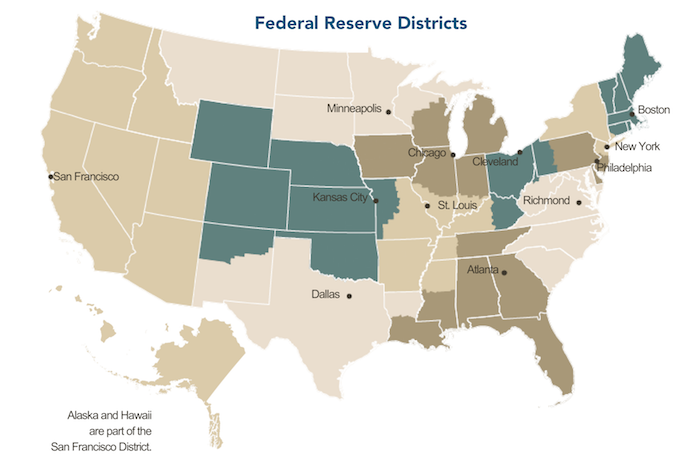The Federal Reserve Board released most recent edition of its Beige Book on Oct. 24. The report contains observations on the economic situation for each of the 12 Federal Reserve Districts. Several of the districts included commentary on agriculture within their areas of responsibility. Following is a summary of their comments.

The Sixth District – Atlanta
Much of the district was drought-free by late September with harvests close to their 5 year averages. The year-over-year prices paid to farmers for corn, cotton, rice and eggs were up and prices for soybean, beef and broilers were down for the month of August. Some optimism regarding the new United States-Mexico-Canada agreement was reported among continued concern over tariffs. Reports have also indicated that cropland values within the district have risen over the year in all areas but Florida.
The Seventh District – Chicago
It was reported that heavier than usual rain caused slower harvest and a reduction in the quantity and quality of crops, causing a fall in net crop expectations. Yield expectations were lower than previous years, but reports indicate yield will still reach record levels. Increasing Chinese tariffs resulted in drops in Chinese soybean purchases from the U.S. Even with some noticeable improvements in hog and dairy prices due to compensation from the U.S. government after the tariffs, dairy farmers continued to struggle.
The Eighth District – St. Louis
This district showed slight improvements in agricultural conditions when compared to previous reports. Corn and soybean production and yield forecasts increased from August to September and the expected production levels of cotton and rice improved but their yield forecasts decreased. The production levels of all four crops is expected to be improved from last year.
The Ninth District – Minneapolis
In this district, agricultural conditions remained weak with continuous rain in early fall delaying harvests in some areas. While strong harvests were expected in parts of the district, commodity prices remained weak and greater production was not expected to offset the negative impact low prices had on farm incomes. The international demand for crops was reported to have fallen drastically and a substantial number of dairy farmers in the district have left the business since the year’s start.
The Tenth District – Kansas City
The expectations of increased production contributed to a decline in corn and soybean prices, keeping the farm economy in the district weak. Strong corn and soybean production in Nebraska could offset some effects of low prices if expectations are met. However, the weakening crop yields in Missouri could strain farmer income. The price of wheat was down slightly but higher than the previous year while the price of cattle saw a slight increase but remained lower than last year. Hog prices did see a sharp increase in September following lower production and higher export expectations.
The Eleventh District – Dallas
Precipitation across the district improved drought conditions and the resulting increased soil moisture will help with winter wheat crops. However, the rain did not come in time to help the row crops which have yields expected to be down from last year. Wet fields could have also posed issues in harvesting efforts and could cause quality issues for cotton. The livestock sector showed rising cattle prices, lowered feed costs and strong demands for beef.
The Twelfth District – San Francisco
This district showed some improvement with crop yields beating most expectations. Growers in Central California continued to have solid yields and profits. It was reported that the recent trade policy changes have started to impact activity with the inventories of some exported crops increased after delivery schedule delays. Growing trade tensions were also reported by some to be a reason for wheat and fruit growers in Washington seeing a slight decrease in demand.




Post a comment
Report Abusive Comment